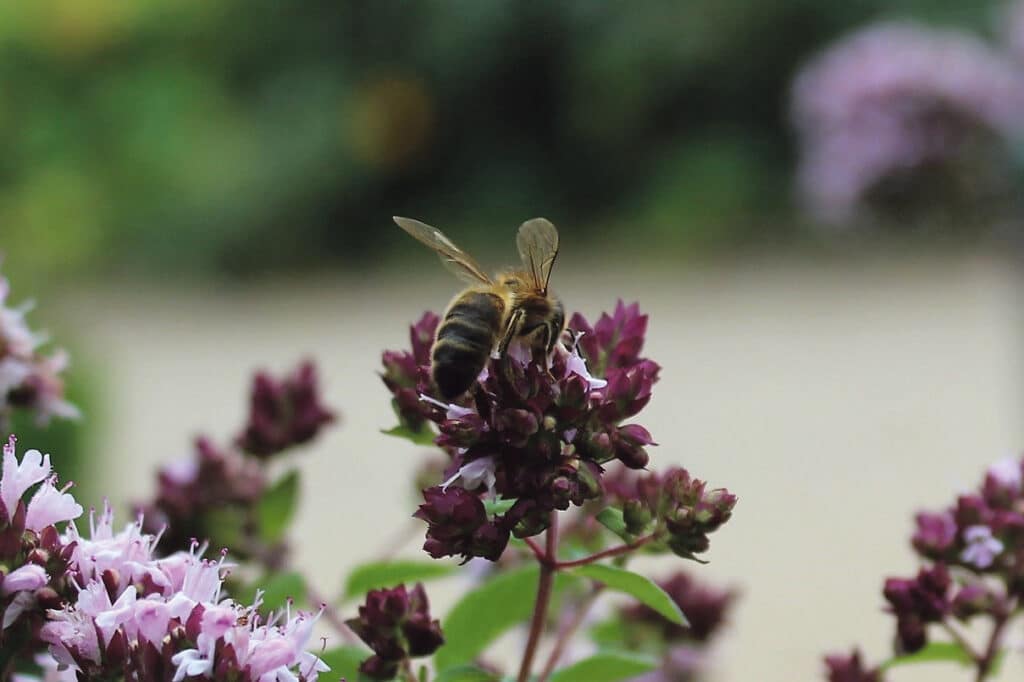According to Biodiversity Ireland there are over 100 separate bee species in Ireland: this includes the native Irish honeybee (Apis Mellifera Mellifera), 21 species of bumblebee and 78 separate species of solitary bee. The different bees are active at different times through the year but most bees emerge in February and some will continue to fly until well into November. Almost three quarters of our wild plants rely on insect pollination, with bees having one of the most important roles in this explains beekeeper Andrew Shinnick of Blackwater Honey.

With the substantial loss of natural habitats, our gardens have become ever more vital as feeding areas, not only for bees, but indeed for other pollinators also. The plants we choose to plant in our gardens can provide a very important source of food in terms of both nectar and pollen that will help bees thrive, give them the necessary energy to fly and find a nest, and provide the young bee larvae with protein, which they require to grow and develop.
In planting a wide variety of flowers in your garden, you can provide all pollinators with a wealth of food sources and choices throughout the flowering season. When it comes to choosing what flowers to plant, choose single flowers with open central parts to give the bees the best chance in obtaining the precious nectar and pollen. It is also important to plant a wide variety of flowers that will grow from early spring into late autumn. This will ensure that there is a continuous supply of flowers blooming throughout the season and leave there is no gap in terms of food supply for bees.
Bees are said to be able to see the colour purple more clearly than any other, so planting plants like Lavender, Alliums, Buddleia and Nepata is advisable. The common dandelion, seen by many as a weed, provide all pollinators with some amazing supplies of both pollen and nectar. The common white clover is also great for bees and makes for some wonderful tasting honey, which can be found in our award-winning and signature Blossom Honey. Below are some plant choices, which, if incorporated into your garden, will help feed the bees throughout the year.
For springtime, we recommend plants like the winter/spring flowering Heathers. Bluebells, Snow Drops, Bugle, Crab apple, Crocus, Hawthorn, along with plants like Primrose, Rosemary, flowering Cherries and Currant along with Forget-me-nots. All of these choices will be invaluable to those bees emerging after the long winter period who need the pollen to help feed their young. In early summer, plants like Comfrey, Campanula, Delphinium, hardy Geranium, Hollyhock, Teasel, and Thyme will help feed the quickly expanding colonies, which are now probably numbering in the tens of thousands of bees within the hive. In late summer and heading into autumn flowers like Aster, Buddleja, Poppies, Cornflowers, Dahlia (single flowered) Globe thistle, Lavender, Heather, Ivy, Scabious and Sedum will enrich your garden with an array of amazing colours and fragrances. It is also important to choose plants that will release pollen at night, as there are many night-time insects which rely on those plants, in particular some species of moth.
Finally, consider the elimination of all pesticides and insecticides from your garden. There are far too many studies, too many to list here, that suggest that many of those chemicals found readily in most garden centres, have harmful side effects on our natural biodiversity, along with reported health implications on us humans with many linked to differing types of cancers. Such is the fear now about these chemicals, that many countries are calling for a complete ban on their usage. Many of you will notice there has been a severe decline in the insect populations (due to insecticide usage); for example perhaps you noticed the decline in insects killed on your car windscreen.
One should also avoid on having an over-manicured garden. The slogan ‘Don’t Mow – Let it Grow’ gained some traction in recent years, with many councils and local resident groups calling for staggered cutting in many of the parks and estates we recreate and live in. By mowing less frequently, we afford the pollinators a fighting chance to avail of the pollen and nectar from the many flowering plants. I remember growing up, my brothers and I used to hide in the long grass meadows and watch the butterflies and bees flying all around us. We would spend hours rolling around the meadow leading down on to the river Blackwater only to be found when we were either tired or hungry. Wouldn’t it be great if those days were resurrected again and what a help that would be for both the bees, and indeed all pollinators.


